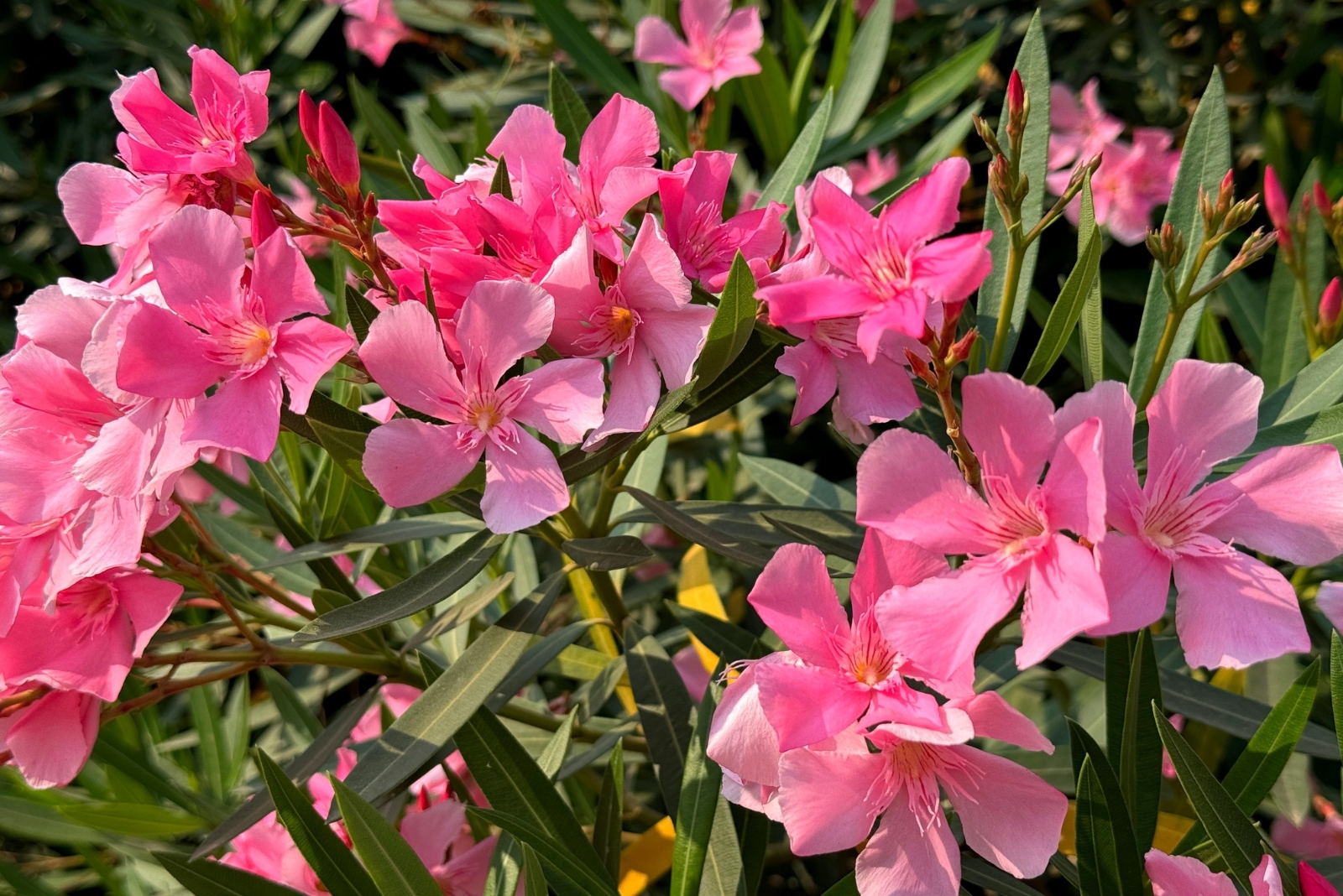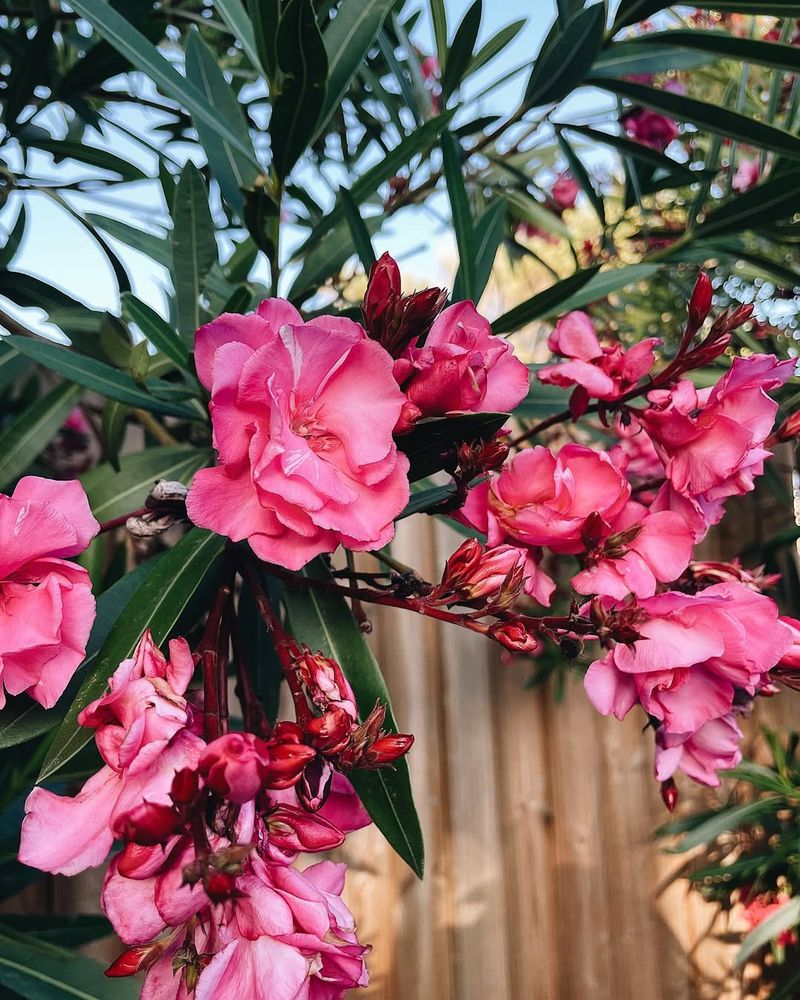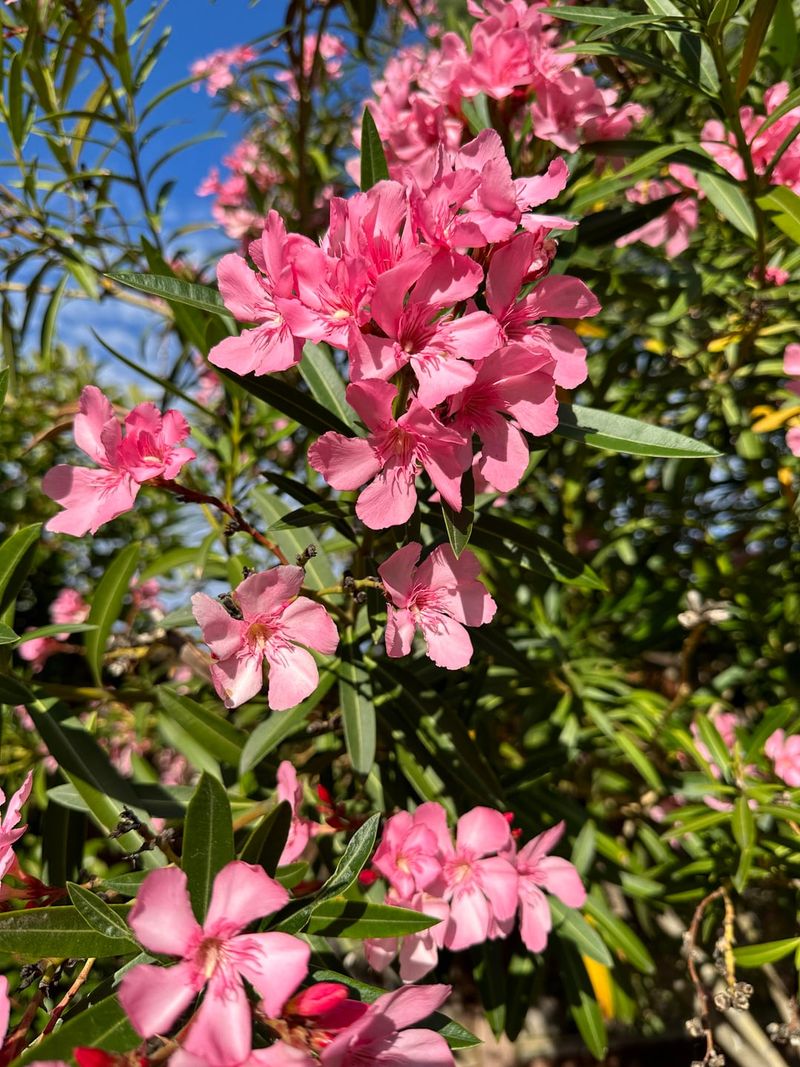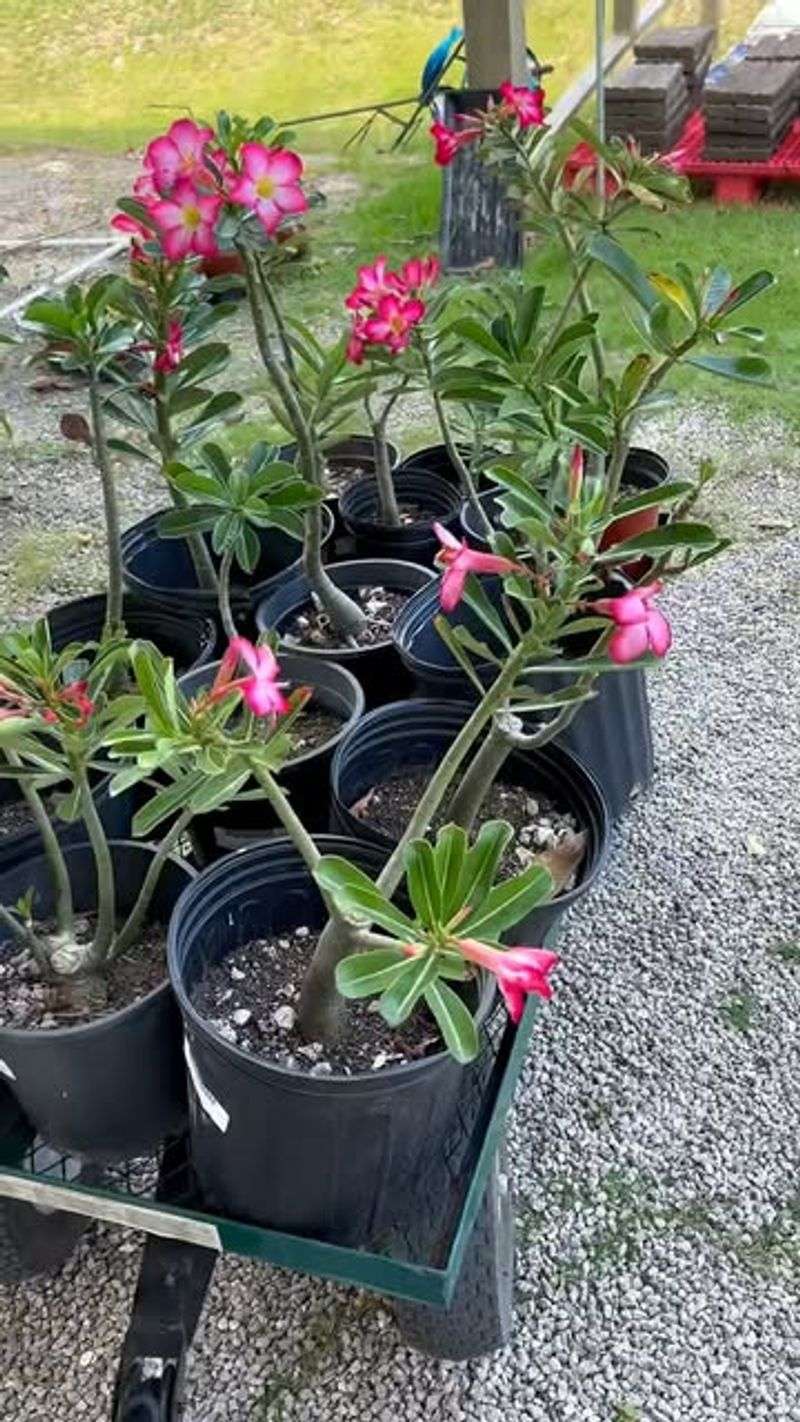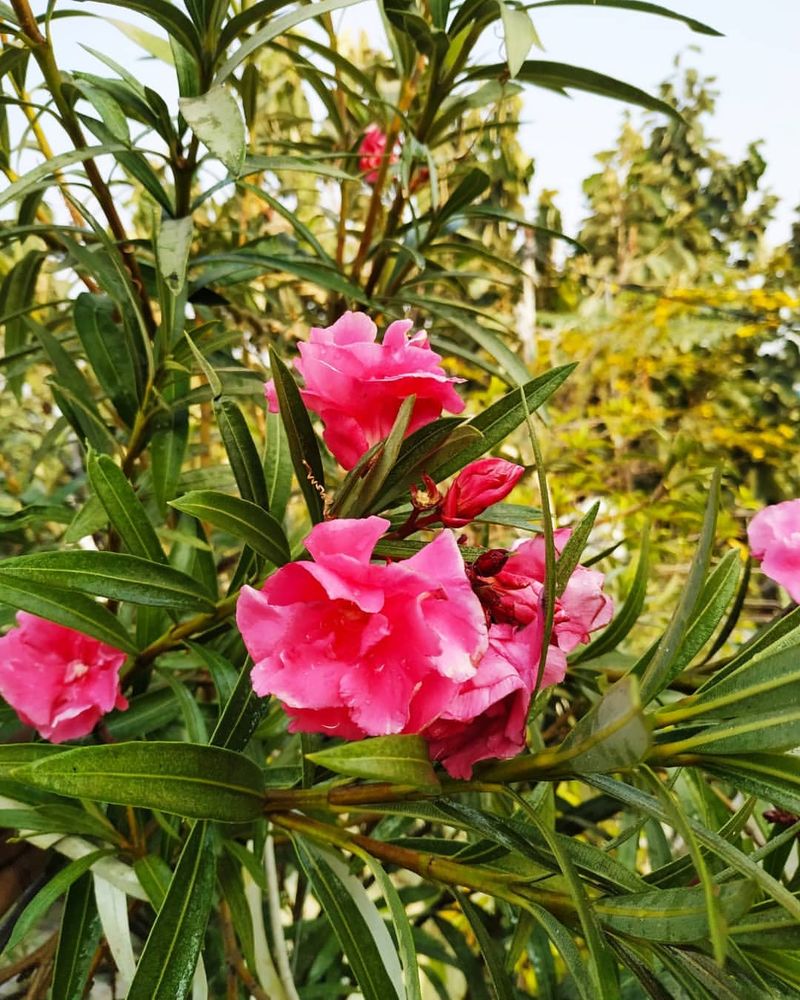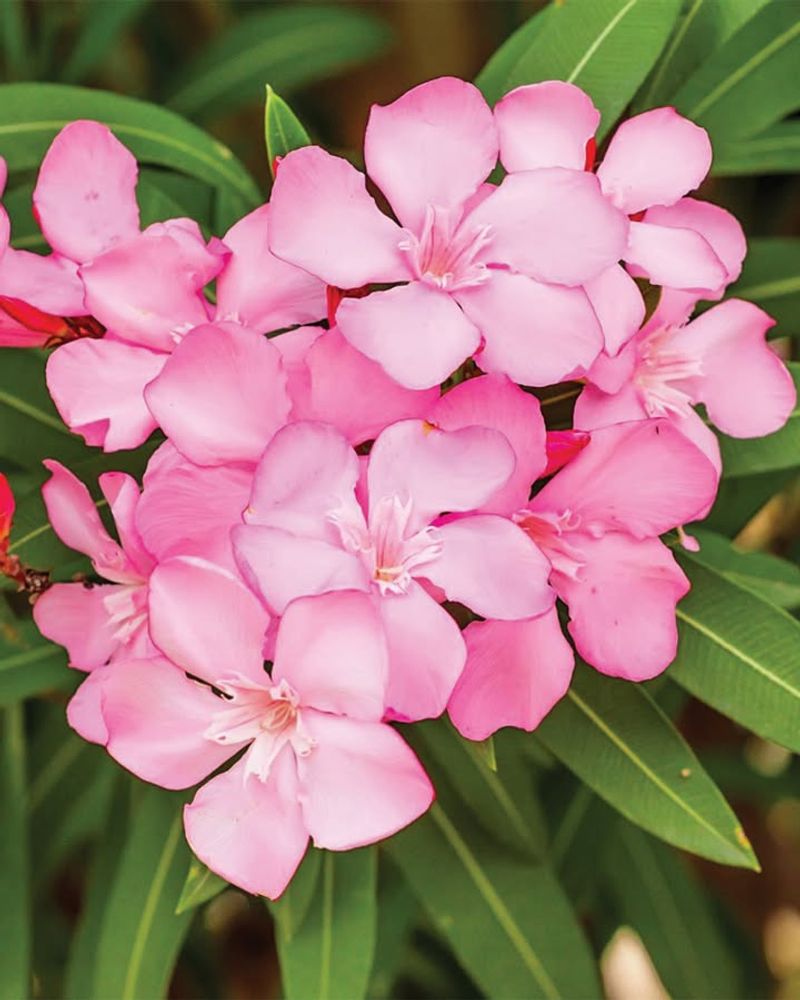Arizona’s harsh sun usually scares off delicate bloomers, yet this shrub keeps showing up with bright petals like it’s on vacation. Gardeners can’t help noticing how pink oleander stays colorful long after other plants call it quits.
It handles the heat with such confidence that it almost feels effortless. This tough beauty has earned its spot as one of the most eye-catching choices in the desert.
1. Handles Extreme Heat Like a Champion
When summer temperatures in Arizona climb past 110 degrees, pink oleander doesn’t even flinch. Its thick, leathery leaves are specially designed to hold moisture and resist the intense desert sun.
Many homeowners across Arizona rely on this plant because it actually enjoys the heat that would wilt other flowering shrubs. The hotter it gets, the more these beauties seem to bloom, making them perfect for those long summer months.
Gardeners appreciate not having to worry about heat stress or constant watering during peak summer.
2. Needs Very Little Water to Survive
Water bills can skyrocket in Arizona, but pink oleander helps keep costs down with its drought-tolerant nature. Once established, these plants require only occasional deep watering, even during the driest months.
Roots grow deep into the soil, seeking moisture far below the surface where most plants can’t reach. Arizona residents love this quality because it means less time spent dragging hoses around the yard.
During monsoon season, the plant absorbs extra water and stores it for later use, showing remarkable adaptability.
3. Blooms Keep Coming All Year Long
Unlike many plants that flower briefly, pink oleander produces clusters of gorgeous blooms nearly year-round in Arizona’s climate. The flowers appear in waves, with the heaviest blooming happening from spring through fall.
Even during mild Arizona winters, you’ll often spot fresh pink blossoms brightening up the landscape. Homeowners enjoy constant color without replanting seasonal flowers every few months.
Each bloom cluster contains multiple flowers, creating a full, lush appearance that adds curb appeal and natural beauty to any property.
4. Stands Strong Against Desert Winds
Arizona’s powerful dust storms and monsoon winds can snap branches and uproot weaker plants without warning. Pink oleander features flexible yet strong branches that bend rather than break during intense weather events.
The plant’s deep root system anchors it firmly in the ground, providing stability that many shallow-rooted species lack. Property owners in Arizona appreciate not having to constantly repair or replace damaged landscaping after every windstorm.
Its dense growth pattern also creates a natural windbreak, protecting more delicate plants growing nearby.
5. Grows Well in Poor Desert Soil
Arizona’s soil can be rocky, sandy, or packed with caliche, making gardening challenging for even experienced plant lovers. Pink oleander adapts to these difficult conditions without requiring expensive soil amendments or constant fertilization.
The plant’s root system efficiently extracts nutrients from even the poorest soil quality found throughout Arizona neighborhoods. Gardeners save money and effort because these shrubs don’t demand rich, organic soil to produce stunning results.
Adding a little compost helps, but it’s certainly not necessary for the plant to flourish beautifully.
6. Requires Minimal Pruning and Maintenance
Busy Arizona homeowners appreciate plants that don’t demand constant attention, and pink oleander fits that description perfectly. Beyond occasional shaping to maintain size, these shrubs grow naturally into attractive forms without much intervention.
Spent flowers drop on their own, and the plant continues producing new blooms without deadheading. Arizona landscapers often recommend oleander to clients who want beautiful yards without spending every weekend doing yard work.
A simple trim once or twice yearly keeps plants looking tidy and encourages fuller, bushier growth patterns.
7. Provides Privacy and Natural Screening
Creating privacy in Arizona yards often means installing expensive fencing or walls, but pink oleander offers a living alternative. These plants grow tall and dense, reaching heights of eight to twelve feet when mature.
The thick foliage blocks unwanted views while adding natural beauty and softening harsh architectural lines common in Arizona developments. Neighbors throughout Arizona use oleander hedges to define property boundaries and create intimate outdoor living spaces.
Unlike wooden fences that rot or metal ones that rust, living screens get better looking as they mature over time.

